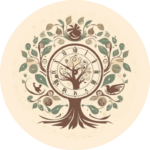“Rub this on your skin, get a lover.” That’s not clickbait. It’s a sixteenth-century recipe, written in all seriousness by the Italian natural philosopher Giambattista Della Porta. He recorded the formula for an ointment, said to be used by witches. The claim was that it could induce an extraordinary phenomenon: it would make the witch believe she was flying and …
Fake Virginity: The Painful Renaissance ‘Cures’ They Sold Women
CW: “Historical discussion of sexual coercion, blood & bodily harm” In Renaissance Europe, failing to bleed on your wedding night could cost a woman her dowry, her marriage – even her safety. So, of course, someone offered a solution. A 17th-century English translation of an Italian book called Magia Naturalis puts it like this: In case that wasn’t clear: the …
17th Century “Intuitive Eating”: Paracelsus and Digestion
What should you eat to be healthy? Well, the answer varies according to time and place, as we know from social media influencers who seem to constantly change their minds about what we ‘should’ or shouldn’t eat’. But who should decide what is healthy in the first place? According to some, only you can know what works for you and …
Alchemy in the Renaissance: The Mysterious Isabella Cortese
How do you become an alchemist? This is what a 16th-century book suggests: This advice is said to come from a woman; it’s from The Secrets of the Lady Isabella Cortese, published in Venice in 1561. But what does this book, and the mysterious writer to whom it is attributed, tell us about women, science, alchemy, authorship, authority and expertise …
Caterina Sforza: The Alchemy and Power of a Renaissance Icon
Imagine you are the ruler of an Italian city in the Renaissance; your husband has been murdered and your children were taken hostage by your political enemies, who hope to take control of your fortress. Yet the people inside are still loyal to you and are not surrendering. So, leaving your children with your enemies, you go inside the castle, …
Paracelsus: The Rebellious Doctor Who Defied Tradition
I recently found myself going down the rabbit hole of Japanese manga and anime fandom online. Now, this is something I know nothing about. I’ve never really been into anime or manga, but I was fascinated to learn about Van Hohenheim or ‘Hohenheim of Light’, a character who is a powerful alchemist in the anime series Fullmetal Alchemist, clearly inspired …
Fioravanti: Pioneering Surgeon-Alchemist of the Renaissance
Leonardo Fioravanti was called a Charlatan, a Poisoner, a Reformer, a Knight, a Prophet, a Miracle-Worker, a Saviour, an Alchemist, and a Fraud.
‘Follow what I say’: Isabella Cortese and Early Modern Female Alchemists
ow would you go about learning alchemy? Well, I would start by making a list of alchemists whose work I should read. Then, I would do a lot of reading. That might seem unimaginative – and it is – but, for centuries, that’s how people learned alchemy. Of course, they would eventually go to their laboratories or kitchens and try things out in practice. But reading was essential.
Caterina Sforza: Using All the Weapons in Her Arsenal
After her husband was assassinated and she and her children were taken prisoners by their political enemies, Caterina Sforza (1463-1509) found herself in a precarious position. The conspirators wanted to take control of the castle in Forlì, yet the people inside, loyal to Caterina, did not want to surrender.










